The Irruption of 2020-21 comes to a close in the West
Authors: Matthew J. Williams and Matthew A. Young
April 2021
The finch irruption was a fantastic bit of good news this year and provided plenty of birding excitement throughout the long, dark winter months that seemed especially bleak this year. In the fall, as the COVID-19 Pandemic passed the 6-month mark, the irruption began…and now seems to be wrapping up, as one might expect with spring returning to the northern breeding grounds!
While the eastern irruption was truly epic, as early as October 2020, the Western US was seeing some significant movements of Pine Siskins, Cassin’s Finches and Type 1 Evening Grosbeaks, suggesting that this irruption year wasn’t only going to be for Easterners. While seeing these species in the West isn’t exactly big news, their numbers and movements this year beyond their typical core ranges were noteworthy.
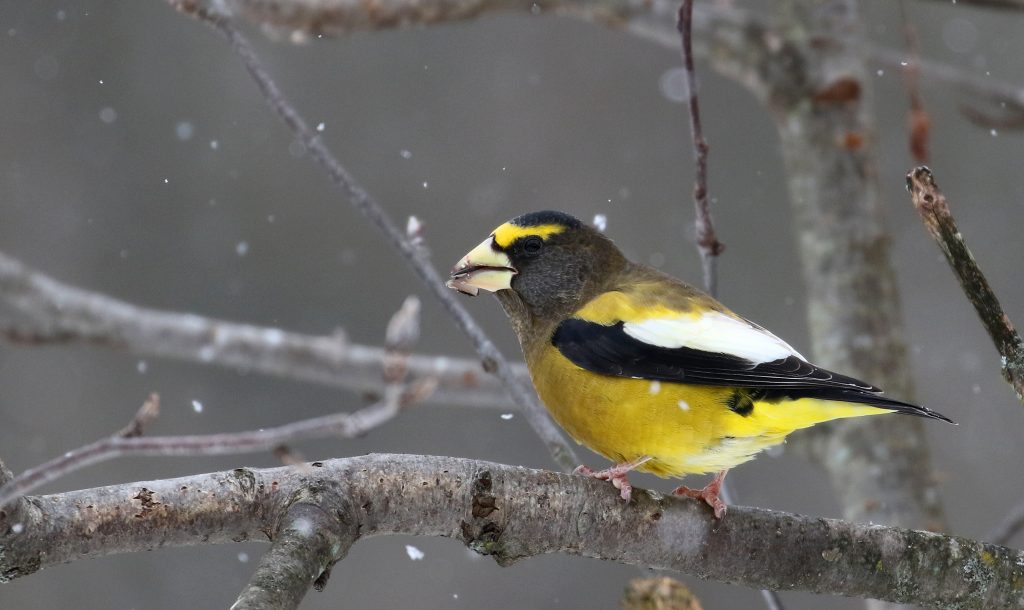
The 2012-13 western redpoll irruption was perhaps the best on record, but this year’s Common Redpoll movement pushed nicely into the western states with scattered sightings from October through December in Southern Utah, Southern Colorado and even down to the Bosque Del Apache NWR Visitor’s center in New Mexico! If there were significant numbers throughout the west, it seems possible that many went undetected. Most feeder reports were of single birds, not large flocks. Several notable sightings in early March of up to 70 Common Redpolls in Croydon, Utah feeding on birch and alder catkins suggests that larger numbers may have been feeding on natural food sources. A possible Hoary Redpoll was also reported in this flock: https://ebird.org/checklist/S82628589
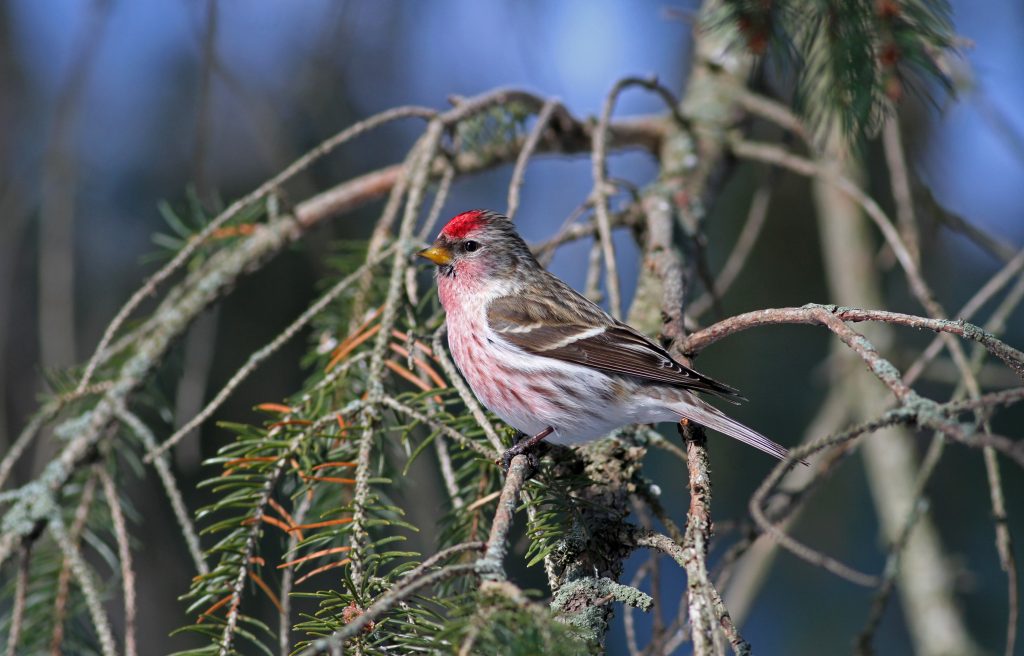
Lawrence’s Goldfinches are the finch nomads of the southwest. These gray-bodied, black-faced birds show almost no loyalty to any single spot, breeding in a site one year only to disappear the next. Their reliance on native plant seeds like fiddleneck in the summer and chamise in the winter make their population dynamics a lot like the finches in the East; these goldfinches “irrupt” beyond the core of their range and into Arizona during years following a successful breeding season. This year, they’ve shown up in San Francisco, throughout Arizona, deep into Baja California, and as far east as Texas’ Franklin Mountains State Park, just north of El Paso.
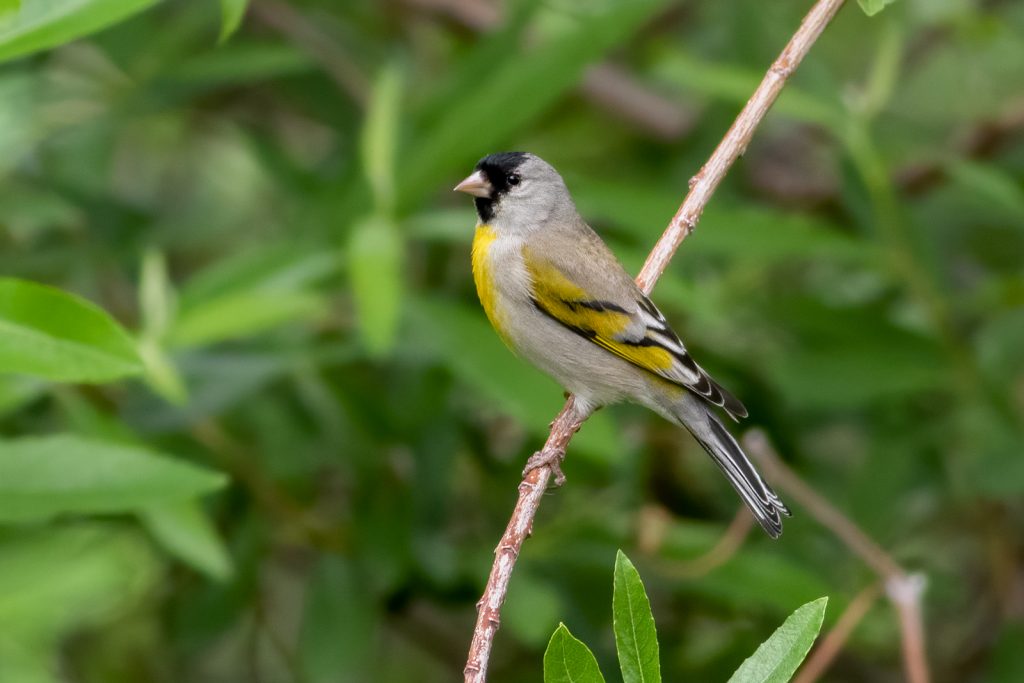
Pine Siskins moved early, far and extensively in the west. Flocks were seen moving as early as September. Unlike the southestern US where they are absent during summer, the conifer forests along the western mountain ranges allow this species to be resident as far south as Chiapas, Mexico and Guatemala so it’s a bit harder to identify irruptors (there is a different subspecies recognized in Mexico). However, the frequency of reports in these southern extremes, a report from Southern Baja California, Mexico suggest perhaps more than just residents.
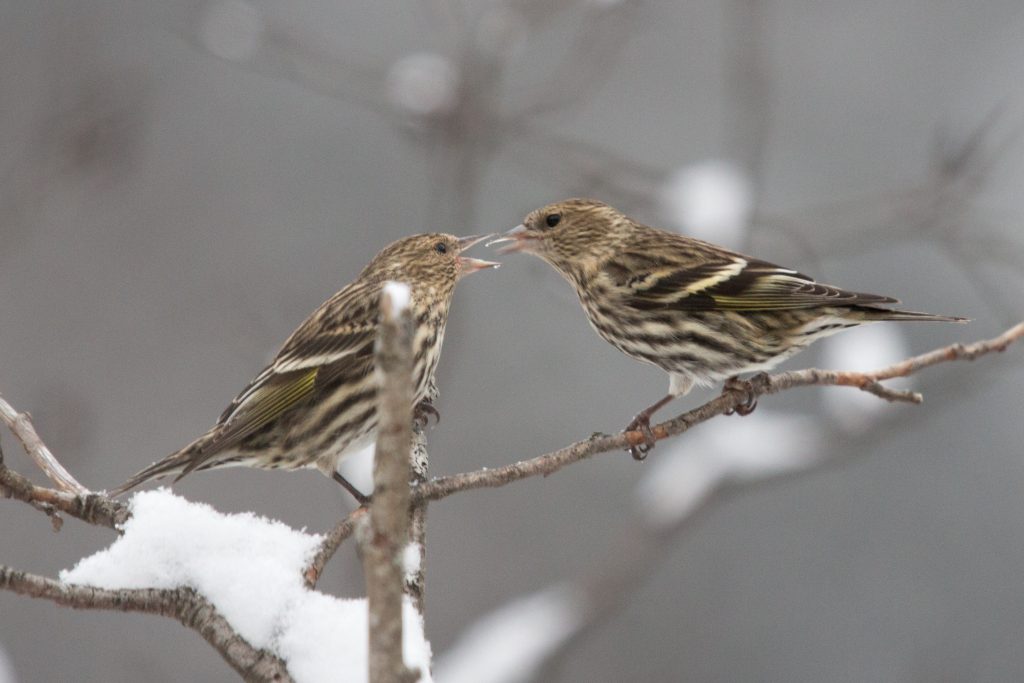
In the western United States, Type 2 Red Crossbills have been seen in unprecedented numbers in coastal areas from California (especially the San Francisco Bay area) to southern British Columbia. The eBird records show much fewer of this type prior to 2019. Most other reports came from 2012-2013. Were they largely absent other years or has new awareness of type identification brought more clarity to which Red Crossbills are present at various times? It’s probably a mix of both to some degree, but many good crossbill contacts clearly confirmed that this was an unusually good year for Type 2s in coastal areas of the west.
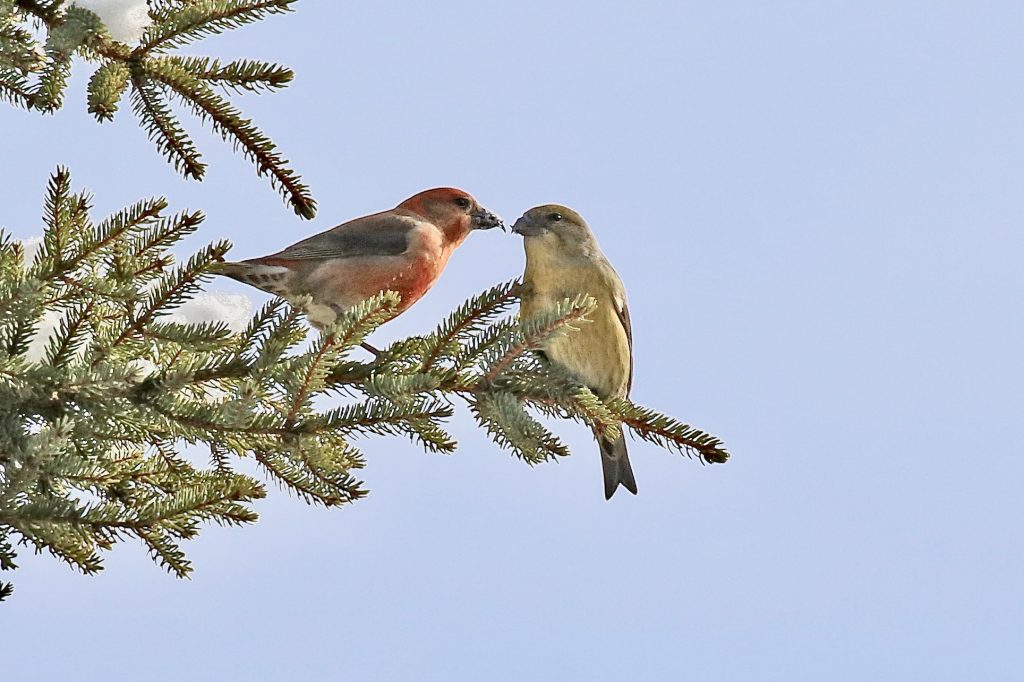
White-winged Crossbills moved in record numbers at Hawk Ridge in Minnesota in October, and a steady stream of smaller numbers also moved out of the eastern boreal into the Northeast too. While outlier birds have been seen as far south in the east as North Carolina and Kentucky, White-winged also moved in numbers in British Columbia, and modest numbers of birds made their way into the southern Rockies as well.
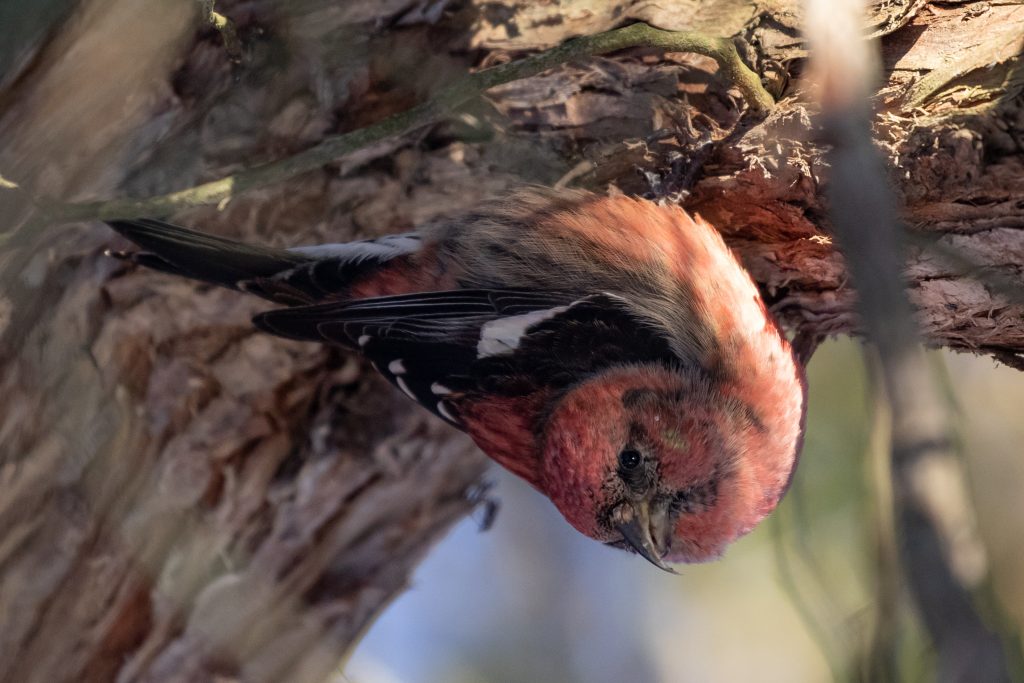
And, even though Evening Grosbeaks are resident, recording audio (use your phone) can help confirm which type you’re observing and could yield some interesting discoveries. One great example is Utah’s first and likely the easternmost Type 2 Evening Grosbeak on record. Interestingly, this same area near Park City, Utah had large flocks of up to ~200 Type 1 in early 2020. A few Type 1 arrived back in late 2020, reaching up to 100 (type unspecified) in early 2021. Perhaps this was because the Type 1’s ventured farther this year, reaching New Mexico, Southeastern Arizona, the Texas Panhandle and even Iowa!
Cassin’s Finches wandered widely this year from the Farralon Islands and Monterey in California to Austin, Texas and Michigan’s Upper Peninsula (First State Record).
From East to West came wandering “Eastern” Purple Finches. There were scattered reports across western Kansas, Nebraska and the Oklahoma panhandle. Denver, Colorado and Salt Lake City, Utah areas had clusters of sightings throughout the fall/winter. West Texas and New Mexico had a few sightings and one female was well-photographed in Eastern Arizona.
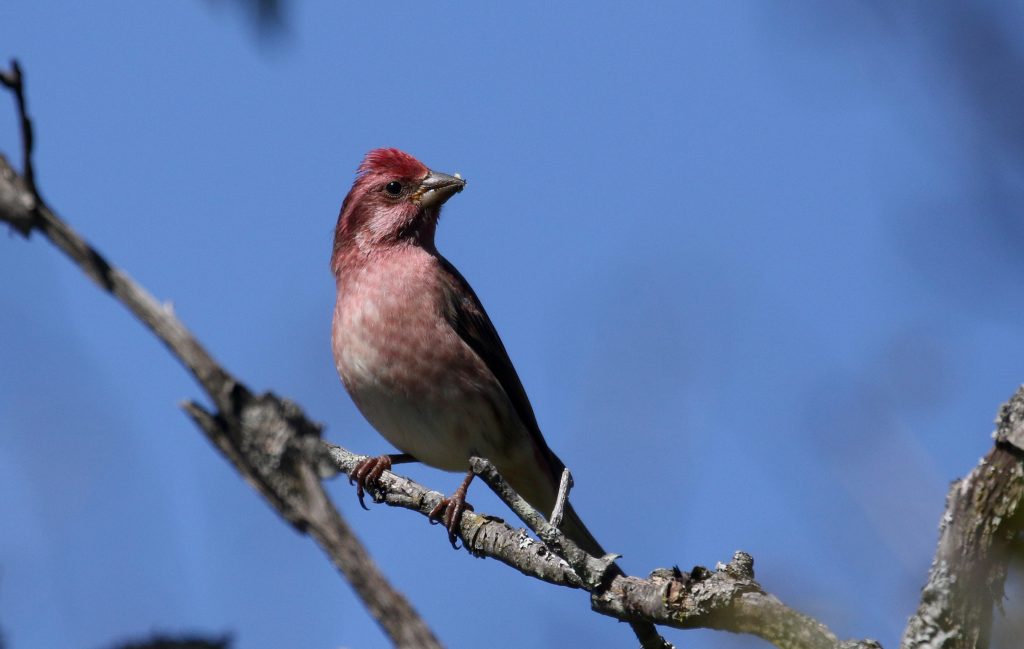
As for Pine Grosbeaks, while parts of the east were enjoying these birds dripping from the branches of downtown fruiting ornamentals, it seemed to be a fairly normal year for this species in the West. Although, movements of them in British Columbia to Idaho were noticeable.

An outbreak of their own
As if we hadn’t had enough talk of disease, with a bit of sick irony, the past few months have brought the finches an outbreak of Salmonella. They even got the attention of the CDC since some humans contracted Salmonella, some apparently from contact with feeders or sick birds, that closely matched samples isolated from infected Pine Siskins. In addition, State wildlife organizations from California to Wyoming directed feeders to be removed and/or cleaned more frequently to slow the spread.
Through this past year, many have found a special appreciation that these brave birds face disease, windows, cats, natural predators, food scarcity and a slew of other perils and still endeavor to make these journeys that captivate us. They do this with with some natural hunch that leaving is less risky than staying. Despite the many obstacles posed by their travels, may many make it back to their breeding grounds this spring and soon return to visit us during the next irruption!
Cover Photo Credit of Cassin’s Finch Jay McGowan
FiRN is a nonprofit, and has been granted 501c3 status. FiRN is committed to researching and protecting these birds and other threatened finch species like the Evening Grosbeak and Rosy-finches, and if you have been enjoying all the blogs and identifying of Red Crossbill call types, redpoll subspecies and green morph Pine Siskins FiRN has helped with, please think about supporting our efforts and making a small donation at the donate link below.
Wildside Nature Tours and The Finchmasters – Finch Research Network (FiRN) are very excited to team up for our first partnership tour focusing on finch species of the Pacific Northwest! We’re really stoked about this. Its going to fun to be working with Alex Lamoreaux and Wildside Nature Tours. Let us know if you’re interested or have any questions. Read below for trip details.
To read more about the movements of finches in the west:

